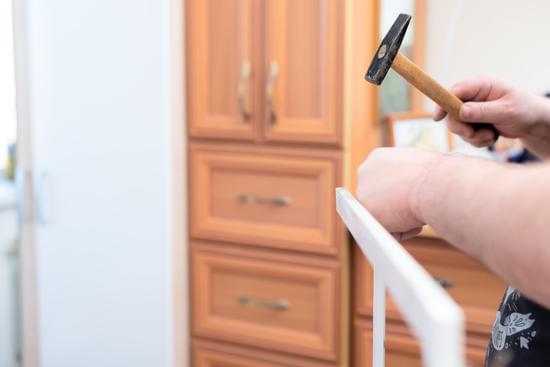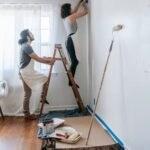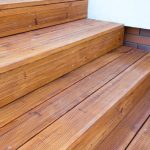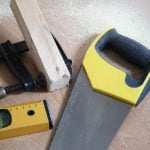A well-insulated home is crucial for maintaining a comfortable living environment and minimizing energy costs. In this article, we will explore how to improve home insulation to increase energy efficiency and enhance overall comfort. Home insulation not only helps regulate indoor temperatures but also plays a key role in reducing energy consumption.
Proper insulation is essential for keeping your home warm in the winter and cool in the summer. Without adequate insulation, you may notice increased energy bills and discomfort due to temperature fluctuations. Understanding the importance of home insulation is the first step towards creating a more energy-efficient and comfortable living space.
By identifying common signs of poor insulation, exploring various types of insulation materials, and learning DIY tips for improving insulation, homeowners can take proactive steps to enhance their home’s energy efficiency. Whether it’s assessing current insulation levels or considering cost-effective ways to upgrade, improving home insulation can lead to long-term benefits for both your wallet and the environment.
Common Signs of Poor Insulation in Your Home
Poor insulation in your home can lead to various issues, such as higher energy bills, uncomfortable indoor temperatures, and potential damage to your property. By understanding the common signs of poor insulation, you can take the necessary steps to improve your home’s energy efficiency and overall comfort.
Uneven Indoor Temperatures
One of the primary indicators of inadequate insulation in your home is experiencing uneven temperatures throughout different rooms. If certain areas feel colder or warmer than others, it could be a sign that heat is escaping or entering through poorly insulated walls, floors, or ceilings. This can result in increased energy usage as your heating or cooling system works harder to maintain a consistent temperature.
High Energy Bills
Another clear indication of poor insulation is receiving unusually high energy bills despite regular usage patterns. When your home is not properly insulated, heat transfer occurs more easily, causing your HVAC system to run longer and consume more energy to keep your home comfortable. By addressing the insulation issues in your home, you can reduce energy waste and lower your utility costs.
Drafts and Cold Spots
Feeling drafts or noticing cold spots in certain areas of your home can also signal insulation problems. Drafts indicate that outdoor air is penetrating into your living space, while cold spots suggest that heat is escaping through gaps in insulation. By addressing these issues with proper insulation measures, you can eliminate drafts, maintain consistent indoor temperatures, and create a more comfortable living environment for you and your family.
Different Types of Insulation Materials to Consider
When it comes to improving home insulation, one of the key factors to consider is the type of insulation material that will work best for your specific needs. There are a variety of insulation materials available on the market, each with their own set of pros and cons. Here are some popular options to consider:
- Fiberglass Insulation: This is one of the most common types of insulation used in homes. It is affordable, easy to install, and has good thermal resistance.
- Spray Foam Insulation: This type of insulation provides a tight seal and can be used in hard-to-reach areas. It also offers excellent thermal resistance and can help reduce energy costs.
- Cellulose Insulation: Made from recycled paper, cellulose insulation is eco-friendly and offers good thermal resistance. It is often used in attics and walls.
It is crucial to consider the R-value of the insulation material, which indicates its effectiveness in resisting heat flow. The higher the R-value, the better its insulating properties. Additionally, factors such as moisture resistance and fire safety should also be taken into account when choosing an insulation material.
When determining which type of insulation material to use in your home, it is best to consult with a professional contractor who can assess your specific needs and recommend the most suitable option based on factors like climate, location, and budget constraints.
Remember that proper installation plays a significant role in maximizing the benefits of home insulation. Whether you choose fiberglass, spray foam, cellulose, or another material, ensuring correct installation will help you achieve optimal energy efficiency and comfort in your home.
Assessing the Current Insulation Levels in Your Home
When it comes to assessing the current insulation levels in your home, it is essential to understand that proper insulation is key to maintaining a comfortable and energy-efficient living space. Insulation helps regulate indoor temperatures, reducing the need for excessive heating or cooling which can lead to high energy bills. By evaluating the existing insulation in your home, you can identify areas that may need improvement and take necessary steps to enhance its effectiveness.
Conducting a Visual Inspection
One way to assess the current insulation levels in your home is by conducting a visual inspection of key areas such as the attic, walls, floors, and basement. Look for any signs of wear or damage to the insulation material, as well as gaps or openings that may allow air leaks. Pay attention to areas where drafts are noticeable or where there are significant temperature differences between rooms.
Using an Infrared Camera
Another method for assessing insulation levels is by using an infrared camera. This technology can help identify areas of heat loss or air infiltration within your home. By conducting a thermal imaging scan, you can pinpoint specific areas that require additional insulation or sealing. This non-invasive technique provides valuable insight into the overall efficiency of your home’s insulation.
By evaluating the current insulation levels in your home through visual inspections and utilizing advanced tools like infrared cameras, you can gain a better understanding of how effective your home’s insulation is at keeping your indoor environment comfortable and energy efficient. Identifying areas that need improvement is the first step towards achieving better insulation performance and ultimately reducing energy costs associated with heating and cooling. Remember, proper assessment is crucial in determining how to improve home insulation effectively.
DIY Tips for Improving Home Insulation
When it comes to improving home insulation, there are several do-it-yourself tips that homeowners can easily implement. Here are some effective strategies to make your home more energy-efficient and comfortable:
- Seal air leaks: One of the simplest ways to improve home insulation is by sealing air leaks around windows, doors, and electrical outlets. Use caulking or weatherstripping to prevent drafts and keep conditioned air inside.
- Install or upgrade insulation: Check the current insulation levels in your attic, walls, and basement. Consider adding more insulation if needed or upgrading to a higher R-value for better thermal performance.
- Use window treatments: Heavy curtains or blinds can help block out cold drafts in winter and keep heat out in summer. Consider investing in insulated curtains or using draft stoppers at the bottom of doors for added protection.
By incorporating these DIY tips into your home improvement projects, you can effectively reduce energy costs and create a more comfortable living environment for you and your family. Remember that proper insulation not only helps maintain indoor temperatures but also contributes to a more sustainable lifestyle.
Hiring a Professional Insulation Contractor
When it comes to improving home insulation, sometimes hiring a professional insulation contractor is the best option to ensure that the job is done efficiently and effectively. However, finding the right contractor can be crucial in achieving the desired results for your home. One key factor to consider when looking for a professional insulation contractor is their experience and expertise in the field. Look for contractors who have a proven track record of successfully improving home insulation for their clients.
Another important aspect to consider when hiring a professional insulation contractor is their knowledge of different insulation materials and techniques. A good contractor should be able to assess your home’s specific needs and recommend the most suitable insulation materials for maximum efficiency. They should also be well-versed in the latest advancements in insulation technology to provide you with cutting-edge solutions for your home.
Moreover, it’s essential to check if the professional insulation contractor is licensed and insured. This ensures that you are protected in case of any accidents or damages that may occur during the insulation installation process.
Additionally, ask for references from previous clients and follow up on them to ensure that the contractor has a history of delivering high-quality work. By taking these factors into consideration, you can find a reputable and reliable professional insulation contractor who can help you achieve optimal energy efficiency and comfort in your home.
| Aspect | Consideration |
|---|---|
| Experience | Look for contractors with proven track records |
| Knowledge | Ensure they know about various materials and techniques |
| Licensing & Insurance | Check if they are licensed and insured for protection |
Cost-Effective Ways to Upgrade Your Home’s Insulation
Improving your home’s insulation can not only make your living space more comfortable but also help you save on energy bills. Here are some cost-effective ways to upgrade your home’s insulation:
1. Seal Air Leaks: One of the most cost-effective ways to improve home insulation is by sealing any air leaks in your windows, doors, and walls. You can use caulking or weatherstripping to fill in gaps and prevent warm or cool air from escaping.
2. Add Insulation: Adding more insulation to your attic, walls, and floors can significantly improve the energy efficiency of your home. Consider using materials like fiberglass, cellulose, or foam board insulation to enhance the thermal protection of your living space.
3. Install a Programmable Thermostat: A programmable thermostat allows you to regulate the temperature in your home more efficiently, reducing the workload on HVAC systems and ultimately cutting down on energy costs. This simple upgrade can complement your insulation efforts and maximize savings.
By implementing these cost-effective strategies on how to improve home insulation, you can enhance the overall comfort of your home while reducing energy consumption. Additionally, these upgrades can increase the value of your property and contribute to a more sustainable lifestyle.
| Method | Benefits |
|---|---|
| Seal Air Leaks | Prevent energy loss |
| Add Insulation | Improved thermal protection |
| Install a Programmable Thermostat | Efficient temperature regulation |
The Benefits of Upgrading Your Home Insulation
Upgrading your home insulation can bring a multitude of benefits to your household, both in terms of comfort and cost savings. One of the key advantages of improving home insulation is the increased energy efficiency it provides.
By preventing heat transfer through walls, floors, and ceilings, proper insulation helps maintain a consistent indoor temperature, reducing the need for heating and cooling systems to work overtime. This not only leads to lower energy bills but also reduces your carbon footprint by decreasing energy consumption.
Furthermore, upgrading your home insulation can greatly enhance the overall comfort of your living space. Properly insulated homes tend to have fewer drafts and temperature variations throughout different areas, creating a more comfortable environment for you and your family. Whether it’s keeping warm in the winter or staying cool in the summer, effective insulation can help regulate indoor temperatures more efficiently, providing a cozy and pleasant atmosphere year-round.
In addition to saving money on utility bills and improving comfort levels, upgrading your home insulation can also increase the value of your property. Homes with high-quality insulation are considered more desirable on the real estate market as they offer energy efficiency and long-term cost savings to potential buyers.
By investing in better insulation now, you not only enjoy immediate benefits but also enhance the resale value of your home in the future. Whether you’re looking to improve your quality of life or boost your property’s value, upgrading your home insulation is a wise investment that yields various long-term advantages.
Top Mistakes to Avoid When Improving Home Insulation
When it comes to improving home insulation, there are several common mistakes that homeowners should be aware of in order to ensure they get the most out of their efforts. One of the top mistakes to avoid is not properly assessing the current insulation levels in your home before making any upgrades. Without knowing the existing insulation situation, you may end up over-insulating certain areas or missing key areas that need attention, leading to inefficient results and wasted resources.
Another mistake to watch out for is using the wrong type of insulation material for your specific needs. It’s important to research and understand the different types of insulation materials available, considering factors such as R-value, durability, and moisture resistance. Choosing the right material for each area of your home will ensure optimal thermal performance and energy efficiency.
Lastly, a common mistake when improving home insulation is attempting complex DIY projects without the necessary skills or tools. While some minor tasks can be tackled by homeowners themselves, more extensive projects such as insulating an attic or crawl space may require professional expertise.
It’s crucial to know when to seek help from a licensed insulation contractor who can provide guidance on how to improve home insulation efficiently and effectively. By avoiding these mistakes and taking a thoughtful approach to upgrading your home’s insulation, you can create a more comfortable and energy-efficient living environment for years to come.
Case Studies
Improving the insulation in your home is not just about making your living space more comfortable, but it can also lead to significant cost savings on energy bills. By understanding the importance of home insulation and recognizing common signs of poor insulation, you can take steps to enhance the efficiency of your home.
Whether you choose to tackle the project yourself or hire a professional insulation contractor, knowing the different types of insulation materials available and assessing the current levels in your home are crucial steps in the process.
If you decide to go the do-it-yourself route, there are plenty of tips and tricks to help improve your home insulation effectively. From sealing air leaks to adding more insulation in key areas, these DIY measures can make a noticeable difference in your home’s energy efficiency.
However, if you prefer to leave it to the experts, make sure to research and choose a reputable insulation contractor who can provide quality workmanship. Look for certifications, experience, and positive reviews when selecting a professional for your home insulation project.
Upgrading your home’s insulation may come with initial costs, but the long-term benefits far outweigh them. Not only will you enjoy improved comfort throughout all seasons, but you will also see reduced energy consumption and lower utility bills.
By avoiding common mistakes and learning from successful case studies of home insulation improvements, you can make informed decisions that will enhance both your living environment and your financial well-being in the long run. Take advantage of these insights on how to improve home insulation and start reaping the benefits today.
Frequently Asked Questions
How Can I Make My House Insulated Better?
Improving your house’s insulation can be done by adding more insulation in key areas like the attic, walls, and floors. You can also seal any gaps or cracks that may exist around doors, windows, and pipes to prevent heat loss. Upgrading to energy-efficient windows and doors can also make a big difference in keeping your home insulated.
Can You Improve Insulation to Existing Walls?
Yes, you can definitely improve insulation in existing walls by methods such as blown-in insulation or injection foam insulation. These techniques involve adding insulation material into the wall cavities without having to tear down the walls. This can help enhance the overall thermal efficiency of your home without major renovations.
How Can I Add More Insulation to My House?
There are several ways to add more insulation to your house effectively. You can start by beefing up the insulation in your attic, which is one of the primary sources of heat loss in many homes.
Adding insulation to crawl spaces, basement walls, and floors can also help increase energy efficiency. Consider consulting with a professional to assess which areas of your home could benefit from additional insulation.

I’m thrilled to have you here as a part of the Remodeling Top community. This is where my journey as an architect and remodeling enthusiast intersects with your passion for transforming houses into dream homes.





